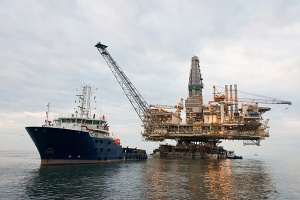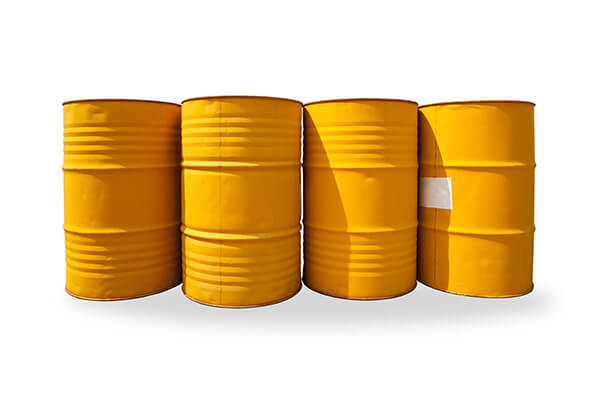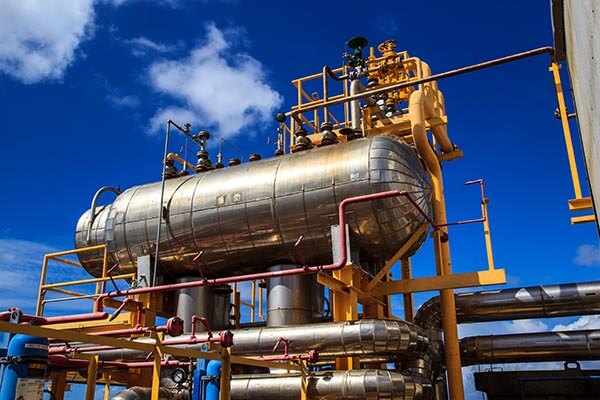Tag Archive for: crude
Increased Automation to Create New Roles in Oil, Gas
/NewsIncreased automation and digitalization in the oil and gas industry will shake up employment opportunities and create new roles in the sector, suggests Thomas Sparks, head of strategy at Siemens Oil & Gas.
“Traditional job profiles in the oil and gas industry will change,” Sparks told Rigzone.
“Onshore training, remote operations centers, manufacturing based on 3D design and online monitoring will become critical game changers,” said Sparks, offering some insight into which industry segments are likely to see the most benefit through a growing shift towards automation and digitalization.
This shift won’t necessarily be bad news for oil and gas professionals though, according to Sparks, who believes new opportunities will emerge as a result of the change.
“It is not a question of whether oil and gas jobs will lose out to automation and digitalization in the future,” said Sparks.
“The question is how the industry will be able to translate huge quantities of information into better operational decisions and how this will lead to new job profiles and job opportunities for the workforce,” he added.
The primary goal of automation is not to replace workers, but to improve the productivity, safety and reliability of operations,” Andrew Hird, vice president and general manager of Honeywell Process Solution’s digital transformation unit, said.
“Forward-thinking organizations seek to empower people through automation, not replace them. By automating basic, repetitive tasks, people can be freed up for more productive, creative work,” he added.
Highlighting a current example of this trend, Hird said that technologies using internet connectivity are creating opportunities for roles such as data scientists, while improving the consistent gathering and analysis of a fast-growing amount of operational data. As automation is used to gather and present data, Hird stated that people are needed to interpret this information and make business-critical decisions based on it.
As many oil and gas companies around the world are facing a shortage of qualified personnel to operate multi-billion production facilities, Hird suggests that the challenge in the current oil price environment is not how to reduce the number of employees. Rather Hird implies that companies must now figure out how to increase production with a declining workforce, as well as attracting and retaining a new generation of workers.
“The only way many … [companies] are able to do so is through improved automation, which again allows them to deploy employees in more productive areas,” Hird said.
Automation Demand Increasing
The demand for automation software in the upstream oil and gas industry was in a period of decline late last year, according to Ali Raza, the vice president and general manager of advanced solutions at Honeywell Process Solutions.
A key reason for the decline was the fluctuating low oil price environment, Raza told Rigzone. The Honeywell VP added that interest in these types of systems first began to fall drastically when the oil price dropped in 2014.
“Although, some of the bigger companies … slowed down their projects they still wanted to continue, because I think one of the major concerns was cost optimization and basically trying to get savings out of cost optimization,” he added.
In spite of the decline, Raza predicted that demand in these systems would pick up towards the end of 2016.
Looking further ahead, IDC Energy Insights, a market provider of intelligence for the global technology industry, forecasted earlier this year that the top 50 percent of oil and gas companies will double down on oilfield operation automation, to double the productivity of those operations, by 2020.
“Oil and gas companies realize they must be more aggressive and consistent in how they run their operations,” Chris Niven, research director for IDC Energy Insights, told Rigzone.
“Many companies are now implementing proven approaches and techniques used over years by manufacturing to run operations more effectively and efficiently,” he added.
Copyright: Rig Zone
Petrobras Says Deep-Water Opening Luring Big Oil to Brazil
/NewsInternational oil companies are reaching out to Brazil after it opened its most promising offshore region to increased competition, a move welcomed by Petrobras Chief Executive Officer Pedro Parente as he seeks partners to spread investment costs.
Producers rushed to contact Houston-based Brazilian officials last week after Congress removed a requirement that Petrobras control operations at all new projects in an area known as the pre-salt, Parente said. It’s the most investor-friendly change in regulation since the 1997 oil law that ended the company’s monopoly in Brazil.
“Our foreign ministry representation unit in Houston, in the very following day, received seven manifestations of interest of big companies,” Parente said at Bloomberg’s offices in New York City.
The policy shift comes as the state-controlled producer is selling assets to slash debt, which stood at $125 billion in the second quarter. The Rio de Janeiro-based producer has a group of more than 30 projects worth about $40 billion that it is marketing to potential buyers, Parente said.
Allowing others to control drilling and production in the potentially oil-rich pre-salt will provide a larger group of offshore operators for Petrobras to team up with at upcoming licensing rounds. Foreign oil companies haven’t had a chance to bid for licenses to operate in the pre-salt since before anyone knew how vast the reserves were.
The nationalistic oil policies were put in place in 2010 when the government moved to put Petrobras in control of the biggest group of offshore discoveries this century. This limited access to bidding with Petrobras as a minority partner, or trying to buy into an existing license awarded under previous rules.
Pre-salt oil was formed when the South American and African continents began separating more the 100 million years ago. The repeated flooding and evaporation of salt water in what is now the South Atlantic created a layer of the mineral as thick as 2,000 meters that blankets the deposits. The biggest discovery in the area, Libra, holds an estimated 8 to 12 billion barrels of recoverable reserves.
Interest in the region is strong. Petroleo Brasileiro SA, as it is formally known, recently sold its stake in a pre-salt concession to Statoil ASA for $2.5 billion. The government is planning to offer new pre-salt exploration acreage in 2017, and the new rules let Petrobras bid more selectively as it looks to contain capital expenditures. The company is likely to continue shedding staff in the next two years, said Parente.
Higher-than-expected output at the pre-salt has cut Petrobras’s break-even cost to $40 a barrel, and the company can lower it further, said Parente. The company will continue efforts to reduce spending even if oil prices rebound, he said, adding that he sees oil at $50 to $55 a barrel next year.
“Productivity of the pre-salt fields in Brazil is amazing,” said Parente. “Some wells produce 40,000, 50,000 barrels a day per well. So I think this is what is in the mind of these companies.”
Petrobras is also looking to bring in partners for its refineries, which posted losses in four out of the past five years. The “ideal” partner would supply knowledge, not just money, according to Parente.
The influx of partners, asset sales and increased competition in offshore fields from foreign producers will force Petrobras to become more efficient, the company’s top managers said.
“Five to ten years from now the market landscape will be completely different,” said Nelson Silva, Petrobras’ head of strategy who was at the interview. “It will put pressure in us to improve.”
Copyright: Bloomberg
Brent Oil Halts Gain near $50 as Market Eyes November OPEC Deal
/NewsOil halted gains after rising above $50 a barrel in London for the first time in more than three weeks, as plans by some OPEC members to boost output raised doubts the group will be able to implement its production cut in November.
Brent futures fell 0.4 percent in London after advancing 6.9 percent last week. While OPEC outlined an accord to reduce production by as much as 750,000 barrels a day, its third-largest member Iran wants to increase exports to 2.35 million barrels a day in the coming months, state news agency IRNA reported. The OPEC member is currently shipping 2.2 million barrels a day. Rigs targeting crude in the U.S. rose a fifth consecutive week to the highest level since February, Baker Hughes Inc. said on its website Friday.
Oil capped the biggest monthly gain since April after the Organization of Petroleum Exporting Countries agreed to trim supply for the first time in eight years. While quotas will be decided at the group’s official meeting in November, Nigeria and Iran have said they are exempt and Iraq has said it doesn’t accept OPEC’s estimates of its production levels. Russia boosted output last month to a post-Soviet record.
“Oil will probably trade between $45 and $50 a barrel as we move into November and see what type of deal is done,” said Angus Nicholson, a market analyst in Melbourne at IG Ltd. “There are questions about how OPEC is going to police the new output limits and how they will keep members in line if they breach their production ceiling.”
Brent for December settlement, which became the front-month contract Monday following the expiry of November futures last week, was 5 cents lower at $50.14 a barrel at 8:17 a.m. on the London-based ICE Futures Europe exchange. The November contract fell 18 cents to expire at $49.06 on Friday, while the December contract closed at $50.19. The global benchmark traded at a $1.47 premium to December West Texas Intermediate.
WTI for November delivery was down 17 cents at $48.07 a barrel on the New York Mercantile Exchange. The contract rose 41 cents to $48.24 on Friday, the highest close since Aug. 19. Total volume traded was about 42 percent below the 100-day average. Prices rose 7.9 percent in September.
For a story on OPEC challenges after the output agreement, click here.
U.S. drillers added seven rigs during the week ended Sept. 30, increasing the count to 425, according to Baker Hughes. The U.S. is pumping at a rate of 8.5 million barrels a day, weekly data from the Energy Information Administration show.
Oil-market news:
Russian output climbed to 11.11 million barrels a day in September, according to data from the Energy Ministry’s CDU-TEK unit. Investors increased their long position in WTI by 24,131 futures and options, or 8.1 percent, during the week ended Sept. 27, according to the Commodity Futures Trading Commission. Bets on falling prices dropped.
Copyright: Rig Zone
At $500 Million A Pop, It’s An Oil Gamble That Has No Precedent
/NewsIn a far corner of the Caribbean Sea, one of those idyllic spots touched most days by little more than a fisherman chasing blue marlin, billions of dollars worth of the world’s finest oil equipment bobs quietly in the water.
They are high-tech, deepwater drillships — big, hulking things with giant rigs that tower high above the deck. They’re packed tight in a cluster, nine of them in all. The engines are off. The 20-ton anchors are down. The crews are gone. For months now, they’ve been parked here, 12 miles off the coast of Trinidad & Tobago, waiting for the global oil market to recover.
The ships are owned by a company called Transocean Ltd., the biggest offshore-rig operator in the world. And while the decision to idle a chunk of its fleet would seem logical enough given the collapse in oil drilling activity, Transocean is in truth taking an enormous, and unprecedented, risk. No one, it turns out, had ever shut off these ships before. In the two decades since the newest models hit the market, there never had really been a need to. And no one can tell you, with any certainty or precision, what will happen when they flip the switch back on.
It’s a gamble that Transocean, and a couple smaller rig operators, felt compelled to take after having shelled out millions of dollars to keep the motors running on ships not in use. That technique is called warm-stacking. Parked in a safe harbor and manned by a skeleton crew, it typically costs about $40,000 a day. Cold-stacking — when the engines are cut — costs as little as $15,000 a day. Huge savings, yes, but the angst runs high.
“These drillships were not designed to sit idle,” said Willard Duffey Jr., an electrician who spent two decades with Transocean. The Deepwater Pathfinder, a ship he had served on for four years, was among the first to be parked off the Trinidad coast. The ship made the voyage there from the Gulf of Mexico about a year ago. Duffey was one of the last men aboard before the engines were turned off. He fretted constantly — “did I do everything I could?” — as he flew back home to Ore City, Texas. “To get the Pathfinder back up would be very difficult to guess actually,” he said.
These rigs, once famously labeled the “new Ferraris” of the oil world, are no ordinary ships. Carrying a price tag of about $500 million a piece, they are loaded bow to stern with sophisticated, and very heavy, gadgetry.
Below the water line sit a half-dozen Rolls-Royce thrusters, coordinated by satellite to push against each other and keep the rig hovering on top of wells lying as much as two miles underwater. Up on deck, there’s a robot that can be launched to work a screwdriver or a wrench under water pressures on the seabed that no human could survive. And the 220-foot tall, dual-activity oil-drilling derrick is capable of simultaneously lifting and lowering gear down to the seafloor, including a diamond-studded drill bit, a five-story-tall blowout preventer and a heavy-drill pipe. The derrick can handle as much as 5 million pounds of gear — equal to the weight of some 20 adult blue whales — going up and down at one time.
All of these fancy elements, though, are what make turning the ships back on so daunting. Chip Keener, whose rig-storage consulting firm advises Transocean, compares it to what would happen if you left a high-tech new car parked in the garage for months. The battery would be dead, sure, but then there’d also be a slew of pre-sets to reprogram. On a drillship, there are thousands and thousands of pre-sets. And unlike your car, those on a ship are essential to its proper functioning. “It’s a big deal,” says Keener.
For now, cold-stacking has been a huge success for Transocean, a long-time Texas powerhouse that’s based today in Switzerland. (It owned the offshore rig that BP Plc was operating in the 2010 Gulf of Mexico disaster.) The company reported a profit of $77 million in the second quarter, surprising investors who had been bracing for a loss. Its stock price jumped 8.5 percent in minutes the next morning in New York.
“I don’t think a simple congrats on this quarter’s cost beat is really sufficient,” one stunned analyst, Scott Gruber at Citigroup, told Transocean executives on a conference call. “A big kudos to all of you.”
Still, there are any number of deepwater rig operators unwilling to turn the engines off: Noble Corp., Rowan Cos. and Pacific Drilling, to name a few. They’re paying anywhere from $30,000 to $50,000 a day to store their out-of-work ships. Chris Beckett, the CEO of Pacific Drilling, said the unknowns of cold-stacking are just too great and the cost to keep the ships running too manageable — about $10 million a year — to turn them off. He likes the peace of mind that comes with this approach. “We don’t worry about how you start them again,” Beckett said in an interview in the company’s Houston headquarters.
The cold-stack versus warm-stack dilemma doesn’t figure to go away anytime soon.
Nearly half of the world’s available floating rigs are out of work today, and most observers expect that number will climb further. Not only are the drillship operators’ customers — the likes of ConocoPhillips and Total SA — slashing spending in high-cost offshore areas and canceling work contracts early, but new rigs that were ordered in recent years keep rolling out of shipyards. Bloomberg Intelligence estimates as much as $56 billion worth of offshore rigs, capable of drilling in everything from shallow water to oceans more than two miles deep, are still under construction.
It’s a far different mood than a couple years ago, when crude was hovering around $100 a barrel and just about every single deepwater rig on the planet was in use. Transocean’s Pathfinder was in many ways the symbol of those go-go days. In mid-2014, just as oil prices were peaking, Eni SpA agreed to pay Transocean $681,000 a day to lease the ship. It was one of the richest drilling contracts ever, an amount that’s about triple the rate a deal signed today would fetch. By the end of that year, with oil in freefall, Eni canceled the contract four months before it was due to expire.
Things are quiet on the Pathfinder these days. The water is calm off Trinidad, one of the top global destinations for drillship storage. A handful of seamen recruited locally make the rounds, in part to ward off criminal elements. They’re joined every once in a while by Transocean mechanics sent in to monitor the ships. The company’s chief operating officer, John Stobart, recently dropped in to check them out himself. CEO Jeremy Thigpen said Stobart came away encouraged.
“He was really impressed with the preservation of all the critical components,” Thigpen said at an energy conference in New York this month. “His belief is, ‘Listen, we’re going to be able to reactivate these rigs in a timely and low cost manner.’”
Stobart’s going to have to wait for his chance. Oil, after having briefly rebounded above $50 in June, is slumping again. And Transocean seems prepared to be in Trinidad for a while. According to island officials, the contract that the company’s negotiating to lease out seabed space could extend through October of 2020.
Copyright: Rig Zone
What Does OPEC’s Freeze Talk Really Mean?
/NewsHeading into the home stretch before a highly anticipated OPEC meeting in Algiers next week, crude industry experts and non-OPEC members alike are opining on what may happen to crude production.
Dave Pursell, managing director and head of macro research at Tudor, Pickering, Holt & Co. in Houston, told Rigzone the production freeze idea is based largely on optics.
“But, they’re raising expectations that there will be an agreement,” he said. “I think they need to do something, and the challenges are less now than they were earlier this year.”
Oil prices have tumbled from more than $100 per barrel in 2014, as prodigious supply outsized demand. More recently, crude prices have hovered in the low $40s.
As Pursell explained, OPEC members Iraq and Libya can’t produce more oil, anyway, at least in the near term. Iraq needs significant capital investment to move forward, and Libyan production is struggling under the weight of political unrest.
“The reality is the only reason you can get a freeze is because people can’t grow. The only spare capacity in the world sits inside of Saudi Arabia and Libya. That doesn’t mean Iran and Iraq can’t grow over time, and the rest of OPEC can’t grow a little bit over time, but it takes a ton of capital,” he said. “There’s no spare capacity that could easily be brought on.”
Still, Pursell said that even if a production freeze agreement is mostly for show, it’s not meaningless.
“But it’s important ‘show’ in that shows they can agree to something. There’s this notion that OPEC is irrelevant and my argument is that if OPEC is irrelevant, how come I’m talking about them every day? And so if they’re going to eventually have to cut – which we don’t think they will – but if they do, you first have to have an agreement to not increase,” he said. “You have to agree on something, and then if you have to make a harder choice down the road that you have to cut, there’s more confidence that it could actually be implemented.”
Many analysts, including Pursell, have said a cut is unlikely, though. Russia recently said it’s off the table. The nation’s energy minister told UPI there are no proposals to slash crude production. Alexander Novak said one option under review would be to maintain production rates at current levels for the up to six months.
According to a new Reuters’ story anonymous sources have said Saudi Arabia would be willing to cut its crude production if Iran will cap its oil output. Iran has steadfastly said it won’t consider a freeze until it has ramped production back up to pre-sanction levels, but that may soon happen.
Copyright: Rig Zone
Oil Bears Dominate Market as Doubt Grows Over Output Limits
/NewsThe longer OPEC and other producers talk about a ceiling on crude output, the more doubts grow in the market.
Money managers increased wagers on falling prices by the most in three months as a meeting between Russia and Saudi Arabia ended without specific measures to support prices. Producers have pledged to discuss action in Algiers later this month.
“The more they talk, the less people listen,” said Michael D. Cohen, an analyst at Barclays Plc in New York. “If you look at the actual statements from the Saudis, there’s not a lot of enthusiasm. They’re saying that either they don’t believe a substantial intervention is needed right now or that if other producers want a freeze, they’ll go along.”
Saudi Arabia’s Energy Minister Khalid Al-Falih said on Sept. 5 that he’s optimistic producers will agree to cooperate in Algiers. He spoke after meeting with his Russian counterpart, Alexander Novak, at the G-20 summit in China. Novak said that a freeze in production by OPEC and Russia would be the most effective way of stabilizing the market.
The International Energy Forum, including 73 countries that account for about 90 percent of the global supply and demand for oil and natural gas, will meet in the Algerian capital Sept. 26-28. The Organization of Petroleum Exporting Countries will hold informal talks on the sidelines of the gathering.
Parsing Words
“Everyone is sifting for clues on whether OPEC will reach an agreement to limit production or leave it uncapped with the potential for higher output,” said Tim Evans, an energy analyst at Citi Futures Perspective in New York. “At this point we’re waiting for the outcome of the talks. A lot of people are standing to the side while others are building positions with a specific view in mind.”
A freeze deal between OPEC members and other producers was proposed in February. A meeting in April ended with no accord because Iran refused to join, while Saudi Arabia insisted that its rival take part. Iran has said it’s too soon to cap output as it’s still restoring production curbed by sanctions.
Speculators bolstered their short position in West Texas Intermediate crude by 34,954 futures and options during the week ended Sept. 6, according to the Commodity Futures Trading Commission. Bets on rising prices declined.
Prices Drop
WTI futures dropped 3.3 percent to $44.83 a barrel in the report week and prices lost 1.6 percent to $45.15 at 9:18 a.m. New York time.
Futures surged Sept. 8 after the Energy Information Administration reported U.S. crude inventories fell 14.5 million barrels in the week ended Sept. 2, the biggest drop since January 1999. Prices retreated the next day as speculation grew the supply drop was a one-off caused by a tropical storm that disrupted imports and offshore production.
Money managers’ short position in WTI climbed to 130,274 futures and options. Longs fell 1.9 percent. The resulting net-long position dropped 19 percent. Net-long positions in Brent crude decreased by 37,226 contracts, according to ICE Futures Europe.
In other markets, net-bullish bets on gasoline declined 32 percent to 11,148 contracts. Gasoline futures dropped 9.1 percent in the report week. Net-long wagers on U.S. ultra low sulfur diesel tumbled 56 percent to 9,840 contracts. Futures declined 4.3 percent.
Gambling Momentum
“There’s a lot of gambling taking place,” said Stephen Schork, president of the Schork Group Inc., a consulting company in Villanova, Pennsylvania. “A lot of money managers are betting that a bottom has been put in but I’m skeptical.”
U.S. crude stockpiles remain at their highest seasonal level in more than 20 years. Refineries plan maintenance programs for September and October when fuel demand is lower. Over the past five years, refiners’ thirst for oil has dropped an average of 1.2 million barrels a day from July to October.
“The market will probably yo-yo in a range through the maintenance season but there’s downside risk,” Schork said. “If demand isn’t a strong as hoped and crude inventories rise, the market could take another leg lower.”
Copyright: Bloomberg
‘Well-Timed’ OPEC Talk Forces Oil Bears Into Record Reversal
/NewsOPEC has done it again.
Talk of a potential deal to freeze output helped push oil close to $50 a barrel and prompted money managers to cut bets on falling prices by the most ever. West Texas Intermediate, the U.S. benchmark, went from a bear to a bull market in less than three weeks.
OPEC is on course to agree to a production freeze because its biggest members are pumping flat-out, said Chakib Khelil, the group’s former president. Saudi Energy Minister Khalid Al-Falih said that the talks may lead to action to stabilize the market.
“This is all courtesy of some very well-timed comments from the Saudi oil minister,” said John Kilduff, partner at Again Capital LLC, a New York hedge fund focused on energy. “They’ve been successful over the last year in jawboning the market, and this is the latest example.”
Hedge funds trimmed their short position in WTI by 56,907 futures and options during the week ended Aug. 16, the most in data going back to 2006, according to the Commodity Futures Trading Commission. Futures rose 8.9 percent to $46.58 a barrel in the report week and closed at $48.52 a barrel on Aug. 19. WTI is up more than 20 percent from its Aug. 2 low, meeting the common definition of a bull market.
“This was a very short market so we were bound to get some covering,” said Stephen Schork, president of the Schork Group Inc., a consulting company in Villanova, Pennsylvania. “You probably won’t hear a lot from OPEC with prices up here, but if we get down to where we were a few weeks ago we can expect to hear more.”
Informal Talks
The Organization of Petroleum Exporting Countries plans to hold informal talks to discuss the market at the International Energy Forum next month in Algiers. Russian Energy Minister Alexander Novak said that the nation was open to discussing a freeze.
Talks to implement a production freeze collapsed in April when Saudi Arabia said it wouldn’t take part without Iranian participation. Iran was restoring exports after sanctions over its nuclear program were lifted in January.
Saudi Arabia, Iran, Iraq and non-member Russia are producing at, or close to, maximum capacity, Khelil said in a Bloomberg Television interview on Aug. 17. Saudi Arabia told OPEC that its production rose to an all-time high of 10.67 million barrels a day in July, according to a report from the group.
Ample Stockpiles
Declining crude and gasoline stockpiles in the U.S. also bolstered the market last week. Crude supplies dropped by 2.51 million barrels as of Aug. 12, Energy Information Administration data show. Gasoline inventories slipped 2.72 million barrels during the period. Stockpiles of both crude and gasoline remain at the highest seasonal levels in decades even after the declines.
“There’s a high level of uncertainty right now, so fairly small news can move the market a lot,” said Michael Lynch, president of Strategic Energy & Economic Research in Winchester, Massachusetts. “It still remains the case that we have a huge surplus of supply and aren’t going to see it disappear anytime soon.”
Money managers’ short position in WTI dropped to 163,232 futures and options. Longs, or bets on rising prices, increased 0.1 percent, while net longs advanced 56 percent, the most since July 2010.
In other markets, net-bearish bets on gasoline climbed 54 percent to 1,970 contracts. Gasoline futures rose 5.7 percent in the report week. Net-long wagers on U.S. ultra low sulfur diesel increased more than fivefold to 10,835 contracts. Futures advanced 9.8 percent.
Copyright: Rig Zone
Big Oil’s $45 Billion of New Projects Signal Spending Revival
/NewsTwo projects worth $45 billion announced this month show the world’s largest oil companies are regaining the confidence to make big investments, emboldened by rising crude prices and low costs that promise to trigger more expansion ahead.
Chevron Corp. gave the go-ahead to a $37 billion expansion in Kazakhstan, the industry’s biggest undertaking since crude started tumbling two years ago. BP Plc signed off on the $8 billion expansion of a liquefied natural gas plant in Indonesia. Two more big projects are likely to get a green light this year, according to industry consulting firm Wood Mackenzie Ltd. and Jefferies International Ltd. — BP’s Mad Dog Phase 2 in the Gulf of Mexico and Eni SpA’s Coral LNG development off Mozambique.
Crude’s recovery from a 12-year low and a decline in project expenses have emboldened executives to start spending again after cutting more than $1 trillion in planned investments planned investments amid sinking earnings. While protecting balance sheets is important, explorers need to at least begin a new phase of investment in exploration and production to ensure future growth.
“We have seen a recent pick-up, demonstrating that projects deemed strategically important are still going ahead,” said Angus Rodger, a Singapore-based principal analyst for upstream research at Wood Mackenzie. He expects about 10 decisions on midsize to large projects this year from fewer than 10 last year, though still well below the annual average of 40 before oil crashed.
While the price slump hit profit hard, it has also driven down costs of services and equipment, including rigs. Drillers have renegotiated contracts to get better deals from suppliers as reduced demand creates a buyers’ market.
BP has knocked more than half the cost off its Mad Dog Phase 2 project. Estimated at $20 billion four years ago, it’s now expected to cost less than $9 billion, Chief Executive Officer Bob Dudley said last month. Rig-rental rates are likely to stay down because of an oversupply, while low steel prices are reducing the cost of other equipment, he said.
Chevron and its partners including Exxon Mobil Corp. approved the Tengiz expansion after postponing the decision last year as oil prices were falling. Like BP, Chevron estimates it has been able to bring costs down far enough to make the investment viable. Output is expected to start in 2022.
Tengiz “has undergone extensive engineering and construction planning reviews and is well-timed to take advantage of lower costs of oil industry goods and services,” Jay Johnson, executive vice president for upstream at Chevron, said in a statement.
Protecting Dividends
Chevron’s and BP’s investment decisions “are a signal that they’re more confident of their ability to pay their dividend,” said Jason Gammel, a London-based analyst with Jefferies. “It’s showing more confidence” in cash flows.
As earnings fell, companies faced a choice between protecting dividends and cutting investment. The biggest opted to protect payouts, canceling projects and firing thousands of people. While some analysts criticized that strategy, bosses including Ben Van Beurden of Royal Dutch Shell Plc said they were doing what shareholders wanted.
Brent crude rose 0.8 percent to $46.76 a barrel on the London-based ICE Futures Europe exchange on Friday. That’s less than half what it was two years ago. It means earnings remain under pressure and companies are still planning to keep overall expenditures low expenditures low to preserve their balance sheets.
“Big Oil is still going to be conservative in their spending,” said Brian Youngberg, an analyst at Edward Jones & Co. in St. Louis, Missouri. “Those days of several of these big projects going on at the same time are in the past.”
Crude Turnaround
Some, including Ian Taylor, CEO of Vitol Group, the world’s largest independent oil-trading house, believe crude’s recent rise is unlikely to last as demand growth slows. Brent also climbed in the first half of 2015 before sliding more than 40 percent by year-end.
Chevron’s and BP’s plans are for expansions of existing projects rather than something built from scratch. They are easier to push through because they maximize existing infrastructure, said Brendan Warn, a managing director at BMO Capital Markets in London.
By contrast, Eni’s plans to exploit its giant Coral gas discovery off Mozambique include the first newly built floating LNG plant in Africa. Eni CEO Claudio Descalzi said in April he is “practically sure” the company will make a final investment decision this year.
“Unless oil prices do something very drastic and go lower, these companies now have many projects in their portfolios to pick from,” said Iain Armstrong, a London-based analyst at Brewin Dolphin Ltd. “Times have improved.”
Copyright: Bloomberg
Oil Bulls Face Specter of Market Turmoil on Brexit Aftershocks
/NewsOil bulls could end up road kill following the Brexit ballot.
Crude tumbled as much as 6.8 percent June 24 after U.K. voters decided to leave the European Union. While some analysts said supply and demand still favor rising prices, Britain’s exit means there’ll be a period of uncertainty over Europe’s future, casting a shadow over the market.
“A vote for Brexit is a vote against globalization, against the free mobility of people and goods,” said Francisco Blanch, head of commodities research at Bank of America Merrill Lynch in New York. “Any reversal in the growth of trade and mobility is bad for the commodities, except gold.”
Global equities plunged after the decision, while haven assets such as the dollar and gold surged. UBS AG said traders will soon focus again on the fundamentals of the market as a global crude surplus fades. They’ll also have to weigh any lasting impact from the U.K.’s decision on the world economy and oil demand.
Money managers were bullish in the run-up to the British vote, boosting bets on rising crude prices in the week ended June 21, according to data from the Commodity Futures Trading Commission. West Texas Intermediate rose 0.7 percent to $48.85 a barrel on the New York Mercantile Exchange in the report week. Futures tumbled 4.9 percent on June 24 and were down 2.4 percent to $46.51 at 11:09 a.m.
“We were calling for $44 oil in 2016 on average, now we expect it in the low $40s, roughly $41,” said Michael D. Cohen, an analyst at Barclays Plc in New York. “The 2017 forecast has been reduced by $3, from $60 to $57.”
The surprise Brexit outcome moved the greenback, with the Bloomberg Dollar Spot Index climbing 1.8 percent on June 24, the biggest gain since October 2011. A rising U.S. currency curbs investor appetite for dollar-denominated commodities. Bookmakers’ odds suggested the chance of a vote to leave the EU was less than one in four.
Crude in New York had been on a bull run, climbing more than 80 percent from a 12-year low in February through early June as disruptions from Canada to Nigeria and falling U.S. production eased a surplus. Prices then dropped in three of the last four weeks as Canadian output rose after wildfires that disrupted production were extinguished and the U.S. rig count began to increase.
Re-Balancing Market
“There needs to be a fundamental re-balancing to the market to see sentiment turn bullish and that’s looking unlikely,” said Rob Haworth, a senior investment strategist in Seattle at U.S. Bank Wealth Management, which oversees $133 billion of assets. “The upside for oil was already limited given the rising rig count,” as well as “the fact that a number of OPEC countries plan to boost oil output,” he said.
The Organization of Petroleum Exporting Countries maintained its policy of unrestricted production at its June 2 meeting, and Iran has rejected any cap on output as it restores volumes following the removal of sanctions in January.
Not all analysts are forecasting that the Brexit vote will be bearish for oil. The period of up to two years for negotiations leading to a U.K. exit and the small relative size of the British market may act as a buffer for crude.
“Any impact on the global economy should be limited,” said Michael Wittner, the New York-based head of oil-market research at Societe Generale SA. “The biggest impact will be on the U.K. itself.”
Bullish Bets
Hedge funds’ net-long position in WTI rose by 21,586 futures and options combined to 213,075, the first gain in five weeks, CFTC data showed. Longs, or bets on rising prices, increased by 4 percent, while shorts dropped 10 percent.
In the Brent market, money managers reduced bullish bets by 9,153 contracts in the week, according to data from ICE Futures Europe. Bets that prices will rise outnumbered short positions by 362,765 lots, the London-based exchange said in a report.
In other markets, net bullish wagers on U.S. ultra low sulfur diesel rose 2.9 percent to 16,528 contracts, the highest since July 2014, as futures climbed 1 percent. Net bullish bets on Nymex gasoline surged 88 percent to 7,012 contracts, the biggest percentage gain since November. Gasoline futures increased 4.7 percent.
Precious metals were the only commodities to rise after the vote as investors flocked to havens. Gold surged 4.6 percent, its biggest one-day gain since September, while the Bloomberg Commodities Index of 22 raw materials fell 1.6 percent.
“We all got it wrong,” said Michael Lynch, president of Strategic Energy & Economic Research in Winchester, Massachusetts. “This is strengthening the dollar, which is bad for commodities.”
Copyright: Bloomberg

Latest News
 Breaking Barriers and Building the Future18 March, 2025
Breaking Barriers and Building the Future18 March, 2025 Fundamental factors to strengthen Pemex12 August, 2019
Fundamental factors to strengthen Pemex12 August, 2019 Offshore Project Development: The Road to First Oil26 July, 2019
Offshore Project Development: The Road to First Oil26 July, 2019









